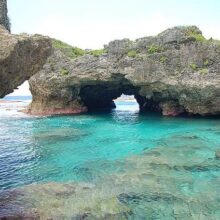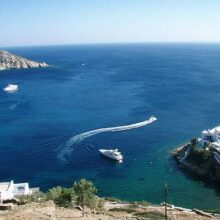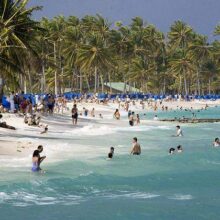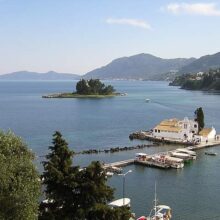A guide to Tortola, British Virgin Island
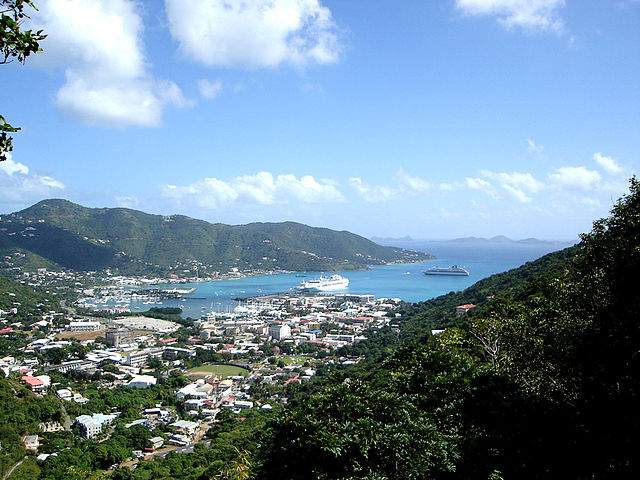
Tortola is a part of the British Virgin Islands in the Caribbean Sea. Among the 50 British Overseas Territories, It is the largest, and consequently, highly populated.
The main bay where the island’s harbor is located is a cove with hills on both the sides of the sea.
Coves are fantastic geographical areas.
Three other islands of notable size include:
- Virgin Gorda
- Anegada
- Jost Van Dyke
Location of Tortola Island:
I have given below the map of the British Virgin Island.
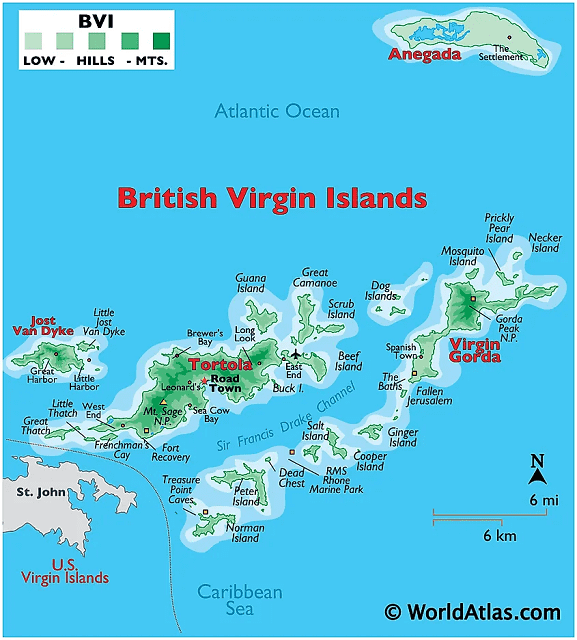
You can easily locate these four major islands and all their brothers, and sisters.
The St. Francis Drake Channel divides the Tortola and Virgin Gorda islands.
How do you go to Tortola?
Road Town (see the title photo of this blog post) that is located in the Sea Cove Bay is the largest city in Tortola.
Though Tortola is the capital of BVI (British Virgin Islands and its Road Town is the capital of Tortola, there is no airport in the capital of BVI.
You have to fly into the small Beef Island that receives flights from St. John Island, a U.S. Virgin Island, and Puerto Rico.
From Beef Island, a road bridge connects this Island. The drive to Road Town is only 15 minutes.
I think this last leg of travelling to Tortola is the most scenic over the Caribbean Sea through Queen Elizabeth Bridge.
The road over the sea covers only a short distance out of 12 km between the two bays.
It seems San Juan (Puerto Rico) And St. John are the gateways to Tortola.
The flight duration is 45 minutes and an hour and 25 minutes from San Juan, and St. John Island respectively.
Hotels and resorts to stay in Tortola:
There is no shortage of hotels on the island. Choose any hotel that is located near the Cane Garden Bay, on the northern coast of the island, because the beach is very beautiful there. In addition, the Caribbean Sea is sparkling here.
A few resorts are of all-inclusive type. Overall, staying in any BVI doesn’t cost much.
What is the best local food to try in Tortola?
A must-eat local food here is the fish and ladiesfinger. What an exotic combination! You will find it on the restaurants’ menu card as “fish & fungi”.
Oh, incidentally, the Fish & Fungi is the national dish of Tortola. The fish is braised in this case; it means marinating in a sauce or liquor and then cooked in a pan.
Yes, I agree the fish and fungi is a must-eat in this islands.
Pate
This is a kind of spread made with fish meat and other vegetables. This paste is spread on bread loaf and eaten. I think, the people of Tortola are really innovative cooks and eat in style with variety.
Conch Creole
In this part of the world, conch (a kind of shell fish) is widely eaten but cooked in various methods. Try a plate of rice served with the conch creole.
Callaloo Soup
Callaloo is a kind of leafy plant that is supposed to be healthy. The soup is served in roadside food stalls in the morning.
Mahi Mahi and Grouper are also highly recommended to eat while touring the BVI.
Dried and salted fish
This poor man’s seafood is served even in high-end restaurants.
Unique fact about Tortola and all other British Virgin Islands in the Caribbean:
Do you know the official currency of BVI is the U.S.$ in spite of being a territory governed by the British?
The main reason being their borders are the U.S. Virgin Islands and Puerto Rico, a nation that is an unincorporated territory of the U.S.
Places to see in Tortola:
Mount Sage National Park

This is a volcanic mountain whose crater is situated at just 1700 feet. I reckon the Mount Sage is probably the shortest volcanic mountain in the world.
This is the foremost attraction of Tortola. Hiking up to the summit is a favorite adventure among the locals, and the tourists.
This NP is located close to the Road Town, the capital city of the island.
You can notice White Cedar as one of the dense rainforest trees. Also, the Mahogany trees can be identified by the local guide who accompanies you during the trek up the mountain.
When you have reached the summit, you get a 360 degree view of the Caribbean Sea, and the St. Francis Drake Channel.
Be wary of the bright-orange Hermit Crabs that are seen crawling all over the island.
I find it strange that the web lacks information about the avifauna of the tropical island that must be rich.
Only the American kestrel was reported to have been spotted.
I later found out that the Mountain Dove is one of the bird species that live in the Mount Sage National Park.
Pearly-eyed Thrasher was found near the bottom of the mountain.
Beaches in Tortola
As mentioned above, the northern coast of the island is blessed with scenic beaches with ultra-clear water.
Some of the best beaches that are recommended by other travelers:
Cane Garden Bay
Isn’t the beach, absolutely gorgeous? In addition, I feel like getting on board the sail-boat and enjoy bumpy ride in the sea.
Long Bay
Smuggler’s Cove
These beaches would consume two of your evenings in Tortola. Morning, and afternoon will be scorching.
Water sports
The sea becomes friendly when it sees people have arrived from abroad to get into the water.
Surfing is indulged in, by the veterans.
Other water sport activities include:
Kite Surfing
Sailing-this is an exciting water-based adventure anytime.
Wind Surfing
Scuba Diving
Please note, all the beaches mentioned wear white sand on them.
Rum tasting
Rum and the Caribbean are inseparable-right? I think every island in the West Indies region has its own rum distillery.
On Tortola too, you can visit the Callwood distillery. It has been brewing for the past four centuries.
Visitors are offered rum tasting experience. When you exit, you can by a bottle or two of rum as an edible souvenir.
Out of their three famous varieties, I would buy the ‘spiced-rum’ that I never tasted.
Callwood distillery also manufactures a typical Caribbean White Rum.
With the length and breadth measuring just 19 km and 5 km respectively, there is not much you can do but to enjoy a fully-relaxed weekend, enjoying the sumptuous food and the sandy beaches.
Tortola Island’s Road Town harbor is a favorite docking port for the cruise ships, and luxury yachts.

